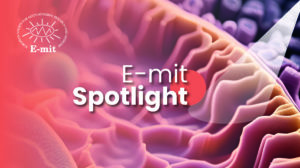Spotlight The First E-mit sponsored “Winter School of Mitochondrial Biomedicine”
-
by
admin
In some of the hottest days of late spring / summer so far it seems only fitting to reminisce about the smashing success of the first “Winter School Of Mitochondrial Biomedicine”, organized by E-mit in January 2024. This first of a kind event was held in the beautiful town of Brixen, located on the beautiful Dolomites of South Tyrol. Twenty world-renowned speakers assembled a 5-days curriculum spanning essential topics of mitochondrial medicine, taught in a classroom style to more than 30 young scientists.
Trying to stay cool during the summer while waiting for the next Winter School, E-mit is proud to present here a summary of the activities, that were a smashing success.
Objectives of the School
The “Winter School in Mitochondrial Biomedicine” aimed to promote the training of PhD students, residents, and postdoctoral researchers interested in the fields of mitochondrial biology and medicine, bringing together international experts in mitochondrial biology, genetics, pathophysiology, and clinical aspects of mitochondrial diseases. It aimed to provide participants with the perspective of basic, clinical, and preclinical research. The participation of Mitocon, the Italian association of mitochondrial patients, introduced patients’ perspectives into the School’s horizon.
The Winter School has organized a series of educational initiatives to achieve its objectives. In the morning, a series of monographic seminars on topics particularly relevant to mitochondrial biomedicine were held, including:
- Diseases in children and adults
- Optic atrophies
- “-omic” tools for diagnostics
- Structure and function of the respiratory chain
- Model organisms
- Mitochondrial DNA, its characteristics, and replication
- Expression of mitochondrial DNA
- Clinical and preclinical therapy
The complete program and titles of each speaker’s interventions are attached. Each session lasted 30 minutes, with 20-25 minutes dedicated to the presentation, leaving 5-10 minutes for questions and discussion.
The afternoon was dedicated to outdoor activities, allowing all the participants to explore the surroundings, socialize, relax, ski, or devote themselves to their work.
In the late afternoon, work resumed with discussion tables lasting two hours, during which students had the opportunity to give a brief presentation of approximately 10 minutes, describing their projects and results, leaving ample space for discussion, guided by expert researchers in the field. This was a critical element for the initiative’s success. It placed students at the center, giving them ample space to interact with field experts and their peers in a relaxed yet highly professional environment.
The evening was again left for recreational activities to foster group spirit and promote participant interaction.
Results
We had 20 highly caliber speakers from various European countries (Figure 1). 34 students from multiple European countries enrolled in the Winter School (Figure 2), including 6 residents and 28 PhD students/postdocs. The levels of appreciation are summarized in a questionnaire administered at the end of the Winter School, to which 17 people responded, half of the attending students (Graph 3).
Overall, the Winter School proved to be a successful formula, highly appreciated by both speakers and students. In particular, the two most appreciated aspects were the blend of basic science and clinical/translational aspects and the high-level discussion where student activities were placed at the center.
The aspect most criticized by students was the limited time for discussion after the speakers’ presentations in the morning sessions.
Economic Aspects
The Winter School received support from the University of Padua (€10,000), Mitocon (€6,000), and EMBO (€5,000), as well as from a sponsor (Oroboros Instruments, Austria), which contributed with a donation (€800), supporting one of the participants and actively contributing to the discussions. The funds were used to cover the speakers’ travel and accommodation costs and waive registration fees, thus facilitating participation. The Winter School received free sponsorship from the Departments of Biomedical Sciences, Biology, and Women’s and Children’s Health of the University of Padua and from the European Society of Mitochondrial Medicine and Research (E-mit).
The Department of Biomedical Sciences directly managed the university funds by paying for the speakers’ accommodation. The Professor covered the excess €1,100 from his own funds (DOR) due to expenses initially charged to the donations.
The economic management of the donations was entrusted to FirstClass, a specialized company whose costs were covered by E-mit and donations from Mitocon and EMBO.
Future Developments
The “Winter School in Mitochondrial Biomedicine” has been a success far beyond expectations and has revealed how much the integration of basic and clinical/preclinical research is appreciated and necessary. Therefore, we intend to propose this initiative again in two years or in a year and a half, in the form of a Summer School. The format will remain similar, with changes based on comments and suggestions from participants left in the satisfaction questionnaire and conveyed orally to the organizers. We anticipate a rotation of speakers to bring new perspectives and issues to the student’s attention. As suggested by some participants, we will organize the days to allow more time for discussion at the end of the speakers’ presentations.
The initiative’s growth, which must necessarily remain aimed at a small group (maximum 40/45 students and approximately 20 speakers), will depend on the ability to attract more resources to provide travel grants and facilitate participation. We will also pay attention to broadening participation to countries that have yet to be involved on this occasion, working on the panel of speakers, and improving the dissemination of news regarding the School.





